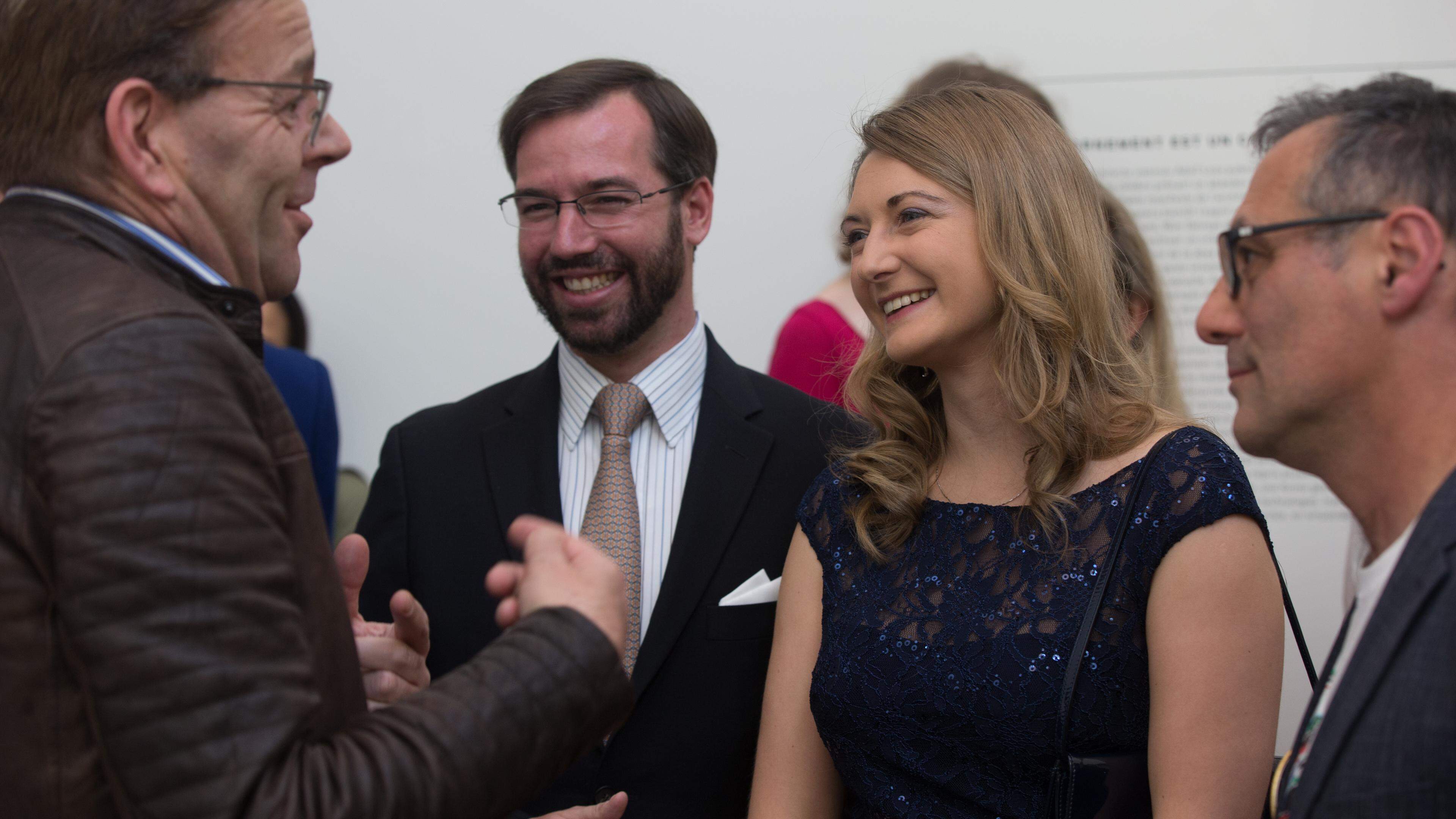« Wim Delvoye et Moi » by Enrico Lunghi – a personal cultural history of Luxembourg

Enrico Lunghi’s autobiographical book « Wim Delvoye et Moi » is much more than a review of a friendship with artists. It is a time document over the stony, contradictory and at the same time impressive rise in Luxembourg to a place of contemporary art.
The thread that runs through Lunghi’s story is his decades of relationship with the Belgian artist Wim Delvoye, an « enfant terrible » of the international art scene, which provokes and fascinated with its Cloaca machines, tattooed pigs and gothically decorated construction site machines.
Lunghi meets Delvoye in 1992 at Documenta IX. What follows is a close artistic and personal connection, which Lunghi should accompany until his last official act as director of the Mudam with Delvoyes Cloaca.
Enrico Lunghi: It continues thanks to art and for art
In his book, the author links private and professional memories with a precise cultural analysis. His career, from the young art critic at the « Luxemburger Word » over the Casino – Forum d’Art Contemporain to the top of the Mudam, also reflected the cultural emancipation of the country, which for the first time was entitled « European capital of culture » in 1995.
« Enrico managed to turn the Mudam a unique museum … and you now cross him, » said Wim Delvoye to Lunghi’s departure at the Mudam. The Belgian artist lets in his works from time to time to church Gothic, at the request of the Mudam, built an iconoclastic chapel in the museum and even wanted to create a laicist cemetery in Luxembourg. After Lunghi’s departure, the chapel was removed from the Mudam. Photo: Christian Aschman
His observations on society, especially the elites, are sharp, ironic and exposed. If Lunghi describes, for example, the bourgeois desire to exploit the Mudam as a stylish backdrop for champagne dinners with art shock, he hits a sensitive nerve and not only in the haze of the Mudam and not only in the area of plastic art.
Fight against resistance, ignorance and political vanities
In any case, there had to be a museum like the Mudam with a lot of strength against resistance, ignorance and political vanities so that a museum could be created in the end. Lunghi also recognizes many personalities of the country in his book who have tried to deal with contemporary art, such as the former museum director Paul Reiles, Lunghi’s predecessor in Mudam, the recently deceased Marie -Claude Beaud and his administrative alter ego in the Casino – Forum d’Art Contemporain Jo Kox.
He also recalls the artist Su-Mei Tse, who won the Golden Löwen at the Biennale in Venice for Luxembourg in 2003, the artist and good friend Bert Theis, who also caused a sensation in Venice in 1995. Incidentally, the book dedicates him a particularly touching passage.
A clever, multi -layered memory book that interweaves personal experiences with structural observations – no billing, but a review with a clear attitude.
Important and successful exhibitions are also listed in this book: « Many colored objects … » and « Manifesta 2 » in the casino and also « Eppur si muove » in the Mudam. The « Lady Rosa of Luxembourg » by Sanja Ivekovic, the pregnant replica of the « Gëlle Frau », freedom symbol and war monument, which has triggered a previously never known polemic and released brutal and hated statements against contemporary art, has released.
Fortunately, Minister of Culture Erna Hennicot-Schoepges stood protectively from curators and museum director at the time, although she got a lot of criticism in her own political ranks.
Wim Delvoye provokes with his cloaca, here exhibited in the Mudam: the machine eats, digest and produces excrement. As an art object, the work is a radical reflection on consumption, art market and the value of the creative. Photo: Eric Chenal
The contemporary art, its curators, the Mudam, the casino, its directors, all of them still remains suspect to this day. Lunghi’s description of his own departure in 2016, initiated by an abusive TV interview, reads in his book like a modern cultural thriller. A journalist and a journalist have been convicted of defamation and call murder in the first instance – the appeal procedure is now being resumed.
A cultural policy diary
The author remains self -critical and reflected on this point in his statements, still vulnerable, but never crying. The political handling of his person is certainly a chapter in itself that Lunghi could definitely expand by much. However, this chapter does not let him – as you might think – frighten it in bitterness, rather he has processed it in analytical clarity.
Enrico Lunghi: « Wim Delvoye et Moi », Editions Phi 2025, 120 pages, 17 euros.
« Wim Delvoye et Moi », published by Editions Phi in the Autobiography series, is a sincere and often very entertaining reading. If you want to understand how the Luxembourg cultural landscape has developed since the 1990s together with its light and dark sides, you cannot avoid this book.
It is a clever, multi -layered memory book that interweaves personal experiences with structural observations – not a billing, but a review with a clear attitude. It is also a portrait of time, a book about art, a cultural -political diary and in the end a small monument for an artist friendship between Enrico and Wim, between Luxembourg and Belgium.







